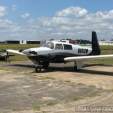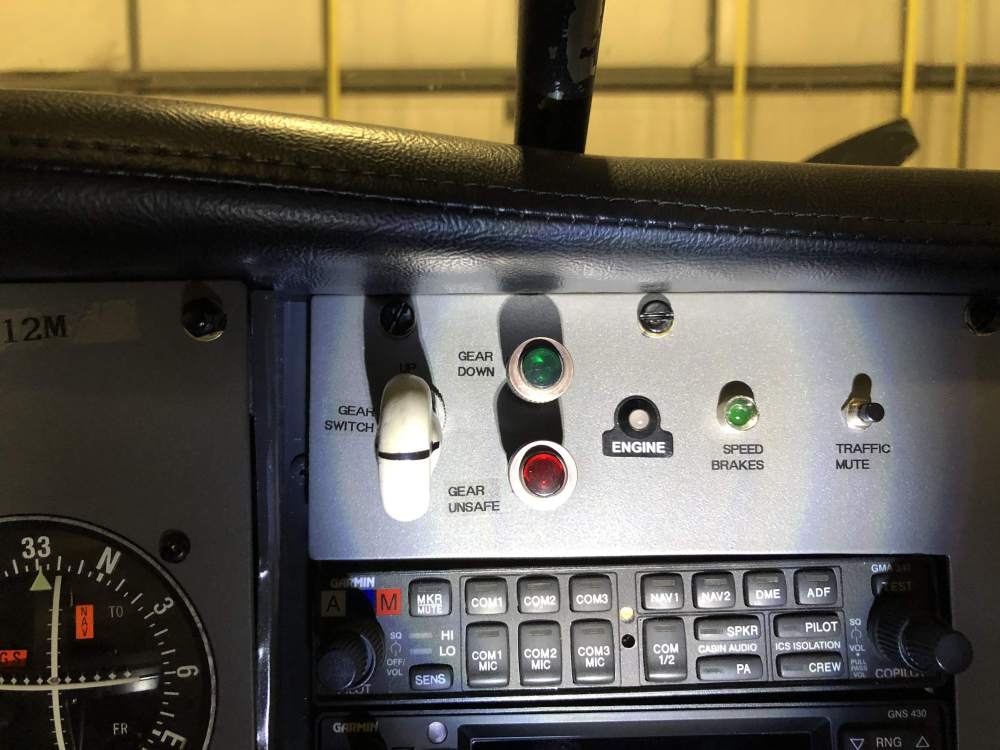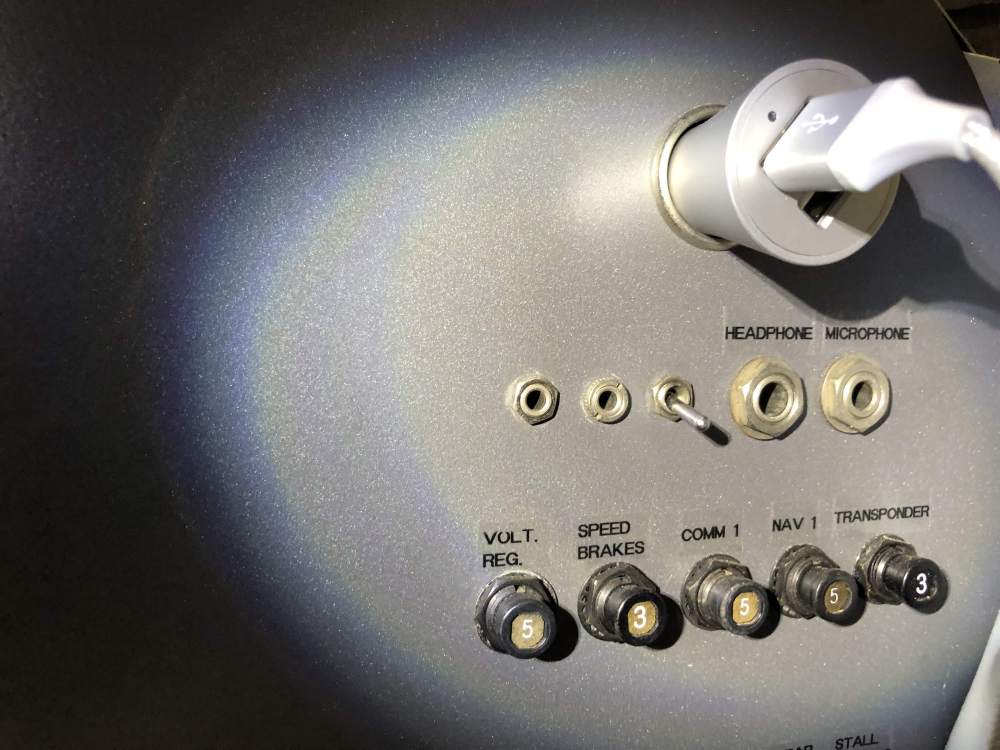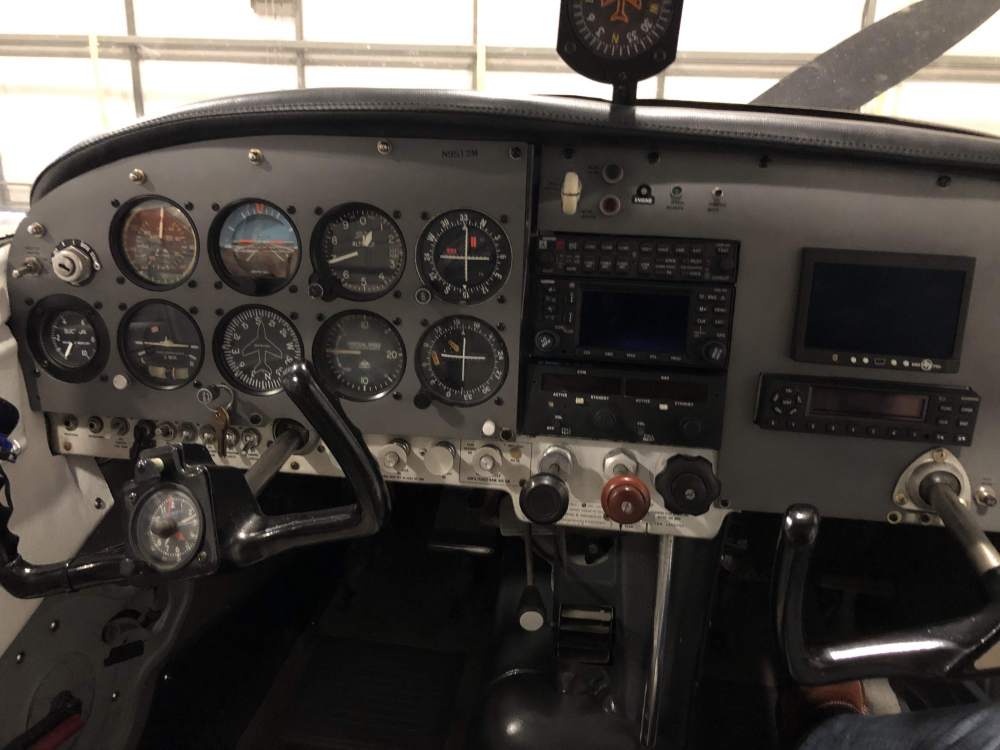-
Posts
1,635 -
Joined
-
Last visited
-
Days Won
5
Content Type
Profiles
Forums
Blogs
Gallery
Downloads
Media Demo
Events
Everything posted by MBDiagMan
-
Great point Steingar! I grew up in my Dads auto repair shop with him constantly warning me about getting near or under a raised vehicle. I have raised hundreds of vehicles with many different methods with no incident. Even with this experience I am hesitant. The vision of a jack poking through the wing of my baby is not pretty.
-

Mooney M20F Avionics Upgrade - ADSB
MBDiagMan replied to sdflysurf's topic in Vintage Mooneys (pre-J models)
Your plan sounds okay except for the 327. Adding a 345 or an L3 equivalent to this recipe would make a good setup as long as you have a good NAV with glideslope in addition to the 430 since you insist on non WAAS. My $0.02, -

M20 PPI - All American Aviation is the Dealer
MBDiagMan replied to Mr. T's topic in General Mooney Talk
I would think that based on physical location, Dugosh in Kerrville would be a good choice. -
I thought I had responded to this thread a long time ago, but it must have been a different thread on the same subject. Due to the introduction of unfiltered air, I really don’t like using carb heat if it is unnecessary. My Cessna has a carb temp gauge. I flew it many hours before buying my C. I never used carb heat unless the carb temp was in the yellow or red range. It worked out beautifully and I never had an issue. Fortunately when I bought my C, it had the very same carb temp gauge arrangement so I followed the same procedure. I highly recommend having a carb temp gauge in a carbureted aircraft and develop the habit of observing the gauge when beginning descent and on downwind and using carb heat if necessary, but if not necessary don’t use it. That said, for those of you in a more damp and cool climate, it might be better to just always use it, but you wouldn’t know unless you flew with a carb temp gauge for a while. As an important side note, unfiltered air at low altitudes where dust exists will wear the top piston rings rapidly.
-
Don, I found your album by clicking on your picture, but couldn’t find the jack picture. I hope you are doing better now days.
-
Okay, looking at the SIM20-114 indicates the use of jack stands under the wings as opposed to jacks. Apparently they recommend the jack stands snugged in place is followed by lifting the front, thus lowering the tail. This would make the HDJacks usable for the purpose. This is what I was trying to describe in my previous post.
-
I would love to find a used Myers set. Hard to even know where to start looking. I expect I will end up building a jack set and using a floor tie down, or a cherry picker. Actually if I had a cherry picker for the front and then just set the screw jacks under the wings and lifted the front rather than jack the wings it might work well although it would be nose high.
-
Has anyone ever used the HD Jack as shown above to raise a Mooney? They are rated at 2500 pounds and I have no doubt they would support that much. My question is, can they LIFT that much, or even the 800 pounds or so that they would have to raise, by simply turning the handle. Additionally, would the shaft turn around the support point rather than the shaft remaining stationary against the lift point without rotating while turning the handle?
-

TruTrak Autopilot Pre Order's / Status Update
MBDiagMan replied to Jeev's topic in Avionics/Panel Discussion
Why do you need to replace the T/C? Doesn’t it work? -

What Does Airspeed Switch Look Like?
MBDiagMan replied to MBDiagMan's topic in Vintage Mooneys (pre-J models)
Okay, I got some Tygon tubing and connected to the pitot tube. I closed the hangar door, closed the aircraft door and pressured the tube several times up to as much as about 140 MPH and could never HEAR the switch click. So... my next thing is checking it electrically. I can’t reach the switch very easily. In fact it is very difficult to access. I have the wiring schematic and I am wondering where the up relay is located. I can check the switch more easily at the relay if it is easily accessible. I am learning thanks to all you guys. -
The picture doesn’t tell the story. She needs to sit in it to know. The only way. If you can find an F or J, it will have the same dimensions in the front seats for a test fit. i think walking away on this basis is a mistake. Just my opinion. Best of luck with it all.
-

What Does Airspeed Switch Look Like?
MBDiagMan replied to MBDiagMan's topic in Vintage Mooneys (pre-J models)
It is in the shop so maybe the filter is not connected due to the stage of repair. -

What Does Airspeed Switch Look Like?
MBDiagMan replied to MBDiagMan's topic in Vintage Mooneys (pre-J models)
Yes, rags picture looks like mine. -

What Does Airspeed Switch Look Like?
MBDiagMan replied to MBDiagMan's topic in Vintage Mooneys (pre-J models)
Thanks! Now if I can just get that dial in the upper left to wrap around way past 135 again, it will all be good. -

What Does Airspeed Switch Look Like?
MBDiagMan replied to MBDiagMan's topic in Vintage Mooneys (pre-J models)
Yeah, don’t you just love autocorrect? -

What Does Airspeed Switch Look Like?
MBDiagMan replied to MBDiagMan's topic in Vintage Mooneys (pre-J models)
It was dark when I took these pictures. No bypass switch. I am going to get some tubing to test the switch and be ready to swing the gear. My 94 year old Mom is going on hospice, so this project may get delayed, but please keep the discussion going. I am getting an education and the thread will hopefully help others now or down the line. Thanks to all. -

What Does Airspeed Switch Look Like?
MBDiagMan replied to MBDiagMan's topic in Vintage Mooneys (pre-J models)
There is a brass disc shaped thing about 3 inches in diameter on the back of the asi that is no more than about a half inch thick with a pinto line to it. -

What Does Airspeed Switch Look Like?
MBDiagMan replied to MBDiagMan's topic in Vintage Mooneys (pre-J models)
There is a brass disc shaped thing about 3 inches in diameter on the back of the asi that is no more than about a half inch thick with a pinto line to it. -

What Does Airspeed Switch Look Like?
MBDiagMan replied to MBDiagMan's topic in Vintage Mooneys (pre-J models)
It’s a 67 model but shows up on some papers as a 66. I expect it was built in late 66. -

What Does Airspeed Switch Look Like?
MBDiagMan replied to MBDiagMan's topic in Vintage Mooneys (pre-J models)
Okay guys! As always you guys are tons of help! Headed to the airport in a few minutes. Now..... if it has the switch, it seems that once on jacks the switch will have to be bypassed to raise the gear. Is there a provision for that? -

What Does Airspeed Switch Look Like?
MBDiagMan replied to MBDiagMan's topic in Vintage Mooneys (pre-J models)
Thanks guys, keep it coming. The plastic window between the seats is so foggy I can’t see much. Can I just cut a piece of plastic and how hard is it to replace? I saw a screw on the top. The gear was all put together sometime early this year by An MSC. It has been flawless for about 15 hours of flying. It has a 40:1 actuator. I am trying to start moving maintenance and repair to my own hangar. The local, competent shop is straight across from my hangar. I am wanting to get it on jacks so I can get familiar with the system myself with them doing the work. Knowing that if it has the airspeed switch it is on the back of the altimeter is good information. If it has the squat switch what does it do? Does it have the limit switches inside? -

What Does Airspeed Switch Look Like?
MBDiagMan replied to MBDiagMan's topic in Vintage Mooneys (pre-J models)
No, but the wiring diagram shows a pressure safety switch in series with the up circuit. Consider me at the level of first day of the Mooney Electric Gear 101 Class. -
In the next few days I hope to get my 67 F on jacks and check into an electric landing gear problem. I am trying to get familiar with everything possible before getting in and under the plane. One thing I need to know is what the “air pressure safety switch” looks like. Some may call it an airspeed switch. I am told it makes at about 80 MPH. I expect it to be located near the ASI. Any pictures or information is appreciated. I don’t think the gear is coming up. No red light, and it flies like a slug. As a side note, I had to give up my wonderful Johnson Bar C due to a shoulder injury. Now I have electric gear that must be kept working. Bad deal. Thanks in advance.
-

Special M20K Mooney resurrection opportunity!!
MBDiagMan replied to mpg's topic in General Mooney Talk
I met the gentleman who sold LASAR. He retained the salvage business. It is no longer part of LASAR. I am away for Thanksgiving but have his business card at home. I can give you his contact information if you would like it. If so, let me know and I will send it when I get home. I would like to have the yokes and maybe a few other things. -
This makes me wonder if the JPI has an indicator for the fuel pump being on other than different pressure.
- 58 replies
-
- annunciator light
- fuel pump
-
(and 2 more)
Tagged with:





